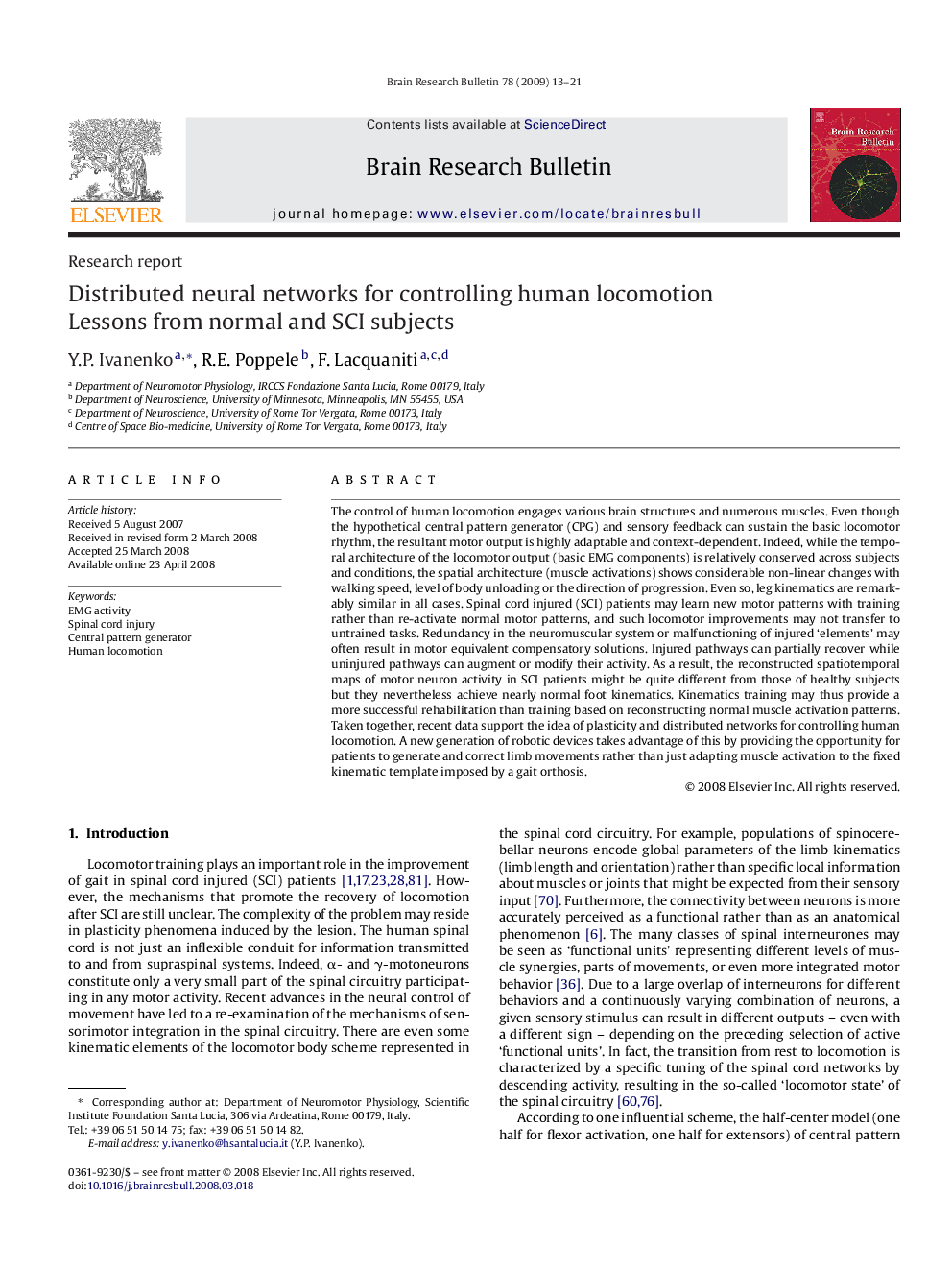| کد مقاله | کد نشریه | سال انتشار | مقاله انگلیسی | نسخه تمام متن |
|---|---|---|---|---|
| 4319780 | 1290831 | 2009 | 9 صفحه PDF | دانلود رایگان |

The control of human locomotion engages various brain structures and numerous muscles. Even though the hypothetical central pattern generator (CPG) and sensory feedback can sustain the basic locomotor rhythm, the resultant motor output is highly adaptable and context-dependent. Indeed, while the temporal architecture of the locomotor output (basic EMG components) is relatively conserved across subjects and conditions, the spatial architecture (muscle activations) shows considerable non-linear changes with walking speed, level of body unloading or the direction of progression. Even so, leg kinematics are remarkably similar in all cases. Spinal cord injured (SCI) patients may learn new motor patterns with training rather than re-activate normal motor patterns, and such locomotor improvements may not transfer to untrained tasks. Redundancy in the neuromuscular system or malfunctioning of injured ‘elements’ may often result in motor equivalent compensatory solutions. Injured pathways can partially recover while uninjured pathways can augment or modify their activity. As a result, the reconstructed spatiotemporal maps of motor neuron activity in SCI patients might be quite different from those of healthy subjects but they nevertheless achieve nearly normal foot kinematics. Kinematics training may thus provide a more successful rehabilitation than training based on reconstructing normal muscle activation patterns. Taken together, recent data support the idea of plasticity and distributed networks for controlling human locomotion. A new generation of robotic devices takes advantage of this by providing the opportunity for patients to generate and correct limb movements rather than just adapting muscle activation to the fixed kinematic template imposed by a gait orthosis.
Journal: Brain Research Bulletin - Volume 78, Issue 1, 15 January 2009, Pages 13–21